#herb identification
Text
hello witchblr friends. a few years ago when I started my craft, a friend gifted me this smudge stick bundle. I personally haven't used it (he used it once, decided it wasn't his thing, and gave it to me to see if I'd like it) but he never told me what herbs were in it, or at least I don't remember. I'm no longer in contact with this friend so I can't ask him, and I understand that sage (specifically white sage) is used in closed practices. I'm not familiar with smudge sticks at all so I wanted to try them out, but I don't want to accidentally do something harmful. can anybody identify what kind of herb(s) are in this stick in case I accidentally intrude on a closed practice? thanks!!
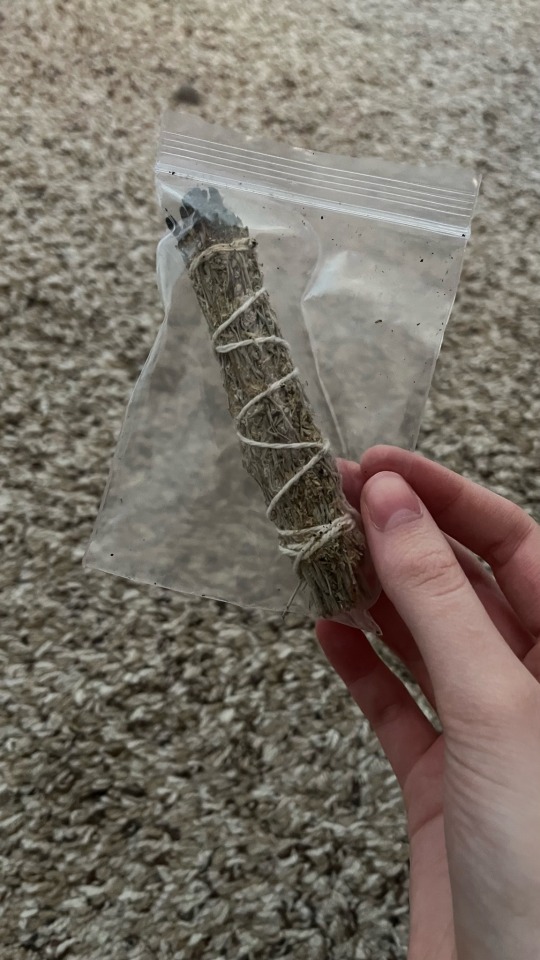

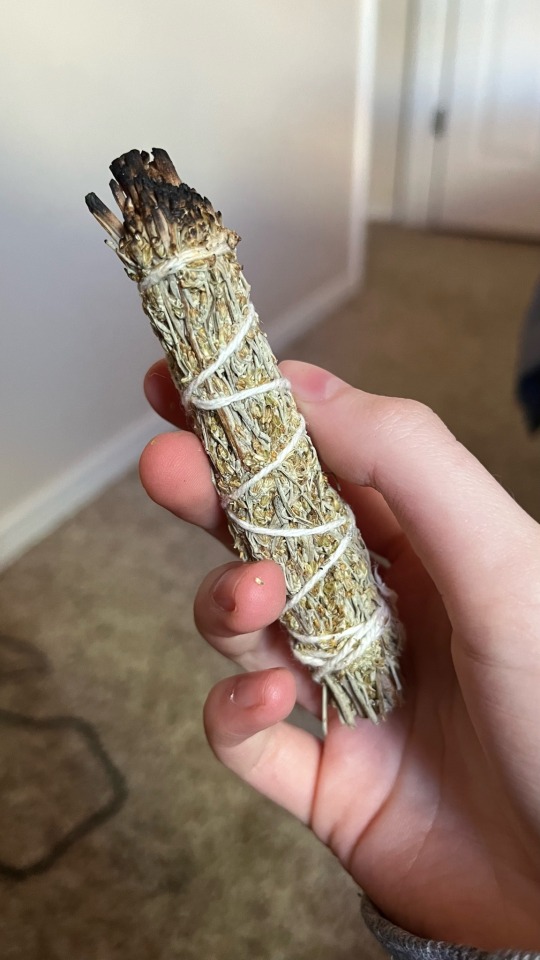
#witchblr#witches of tumblr#witch community#herb#herb witchcraft#green witchcraft#smudge sticks#smudging#herb identification#plant identification#witch herbs#herb witch#closed practices#witch help
15 notes
·
View notes
Text
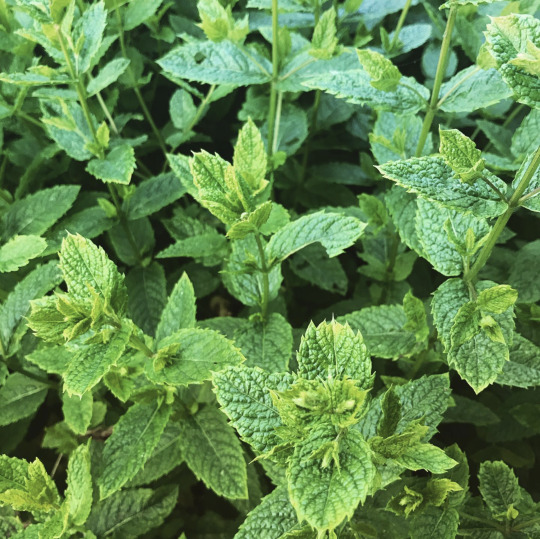
Meet the original source of the flavouring know from toothpaste, mouthwash, and chewing gum - the spearmint plant (Mentha spicata). This plant thrives in shady spots in the garden during the summer. The distinctive taste and scent comes from the naturally occurring chemical R-(-)-carvone. The taste of genuine spearmint is far richer and more complex than its artificially flavoured version, and spearmint plants have been bred to have many different shades of flavour such as “chocolate mint” and “pineapple mint”. It’s an excellent tea herb and it combines well with many other fresh herbs from the garden. There is medical research supporting spearmint’s herbal medicine uses for digestive system issues and antimicrobial properties.
#katia plant scientist#botany#plant biology#plant science#plants#gardening#herbs#herbal medicine#mint#mint leaves#spearmint#mentha spicata#mentha#stomach issues#medicinal herbs#chemistry#shade plants#plant identification#plant facts#herbal tea#organic gardening#grow your own food#homesteading
53 notes
·
View notes
Text

Elderberry Smoothie (Vegan)
#vegan#breakfast#drinks#smoothies#elderberries#wild foods#herbs#banana#blueberries#plant milk#vegan yogurt#if you do decide on making any of today's recipes be sure you forage/source sustainably or not at all#Also be 150% sure in your identifications 💕
70 notes
·
View notes
Text
Foraging and Cultivation: How to Eat the Weeds Without Bugging the Bees

All photos in this article are taken by me. You can view my gallery here.
Here's some information for adventurous eaters.
Some people are understandably wary about eating foods that they can't get from a grocery store. Between concerns about animal feces and pesticides to stories about mushroom poisoning and death, we can all agree that it's not wise to just go outside, grab a healthy-looking berry, and shove it down your gullet. There is a right way to forage, and as a foraging veteran, I'm going to take you through some of the most important information you need to start your own foraging journey.
❁❀✿✾
The Universal Edibility Test
The first, and maybe most important, thing I want to talk about is, of course, how to avoid poisoning or death. Even if what you eat is not inherently poisonous, you can also be allergic to things it would never occur to a doctor to test you for. So, let's discuss best practices for gathering wild plants to prevent injury/death. Luckily, those who came before you have developed a great process for not getting killed while foraging.
Note that this is NOT a safe method for testing the edibility of mushrooms, which are much more difficult to identify and require a lot of study and experience. I may write another article regarding mushroom foraging at a later date, but it's very dangerous so for the purposes of this article, we are only going to discuss plants.
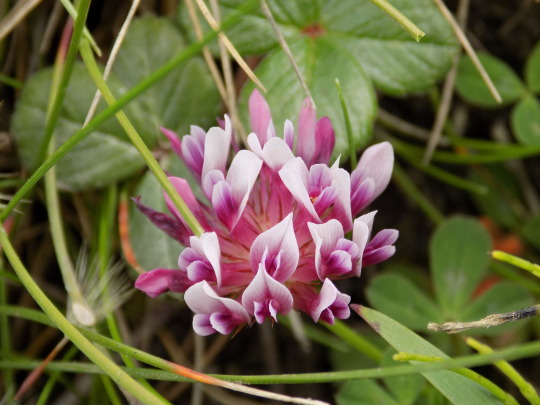
Pink springbank clovers are a tasty and vivid addition to a fresh salad.
"The U.S. Army created the Universal Edibility Test to help soldiers identify poisonous vs. edible plants while out in the field. The test is a standard in the U.S. Army Survival Field Manual ATP 3-50.21, and it appears in the SAS Survival Handbook written by former British Army officer and survival expert John Wisemen."
- From GreenBelly.co
❁❀✿✾
The "Universal Edibility Test" is, as the name suggests, a method for determining the safety of consuming a plant you are unfamiliar with. Here is a very good, simple explanation of the way test works, via Backpacker:
1. Separate the plant into its various parts—roots, stems, leaves, buds, and flowers. Focus on only one piece of the plant at a time.
2. Smell it. A strong, unpleasant odor is a bad sign, as is a musty or rotting odor. Keep a special lookout for pear- or almond-like scents, which can be evidence of cyanide.
3. Test for contact poisoning by placing a piece of the plant on your inner elbow or wrist for 8 hours. If your skin burns, itches, feels numb, or breaks out in a rash, wash off your skin and don’t eat the plant.
4. If the plant passes the skin test, prepare a small portion the way you plan to eat it (boiling is always a good bet).
5. Before taking a bite, touch the plant to your lips to test for burning or itching. If there’s no reaction after 15 minutes, take a small bite, chew it, and hold it in your mouth for 15 minutes. If the plant tastes very bitter or soapy, spit it out and wash out your mouth.
6. If there’s no reaction in your mouth, swallow the bite and wait 8 hours. If there’s no ill effect, you can assume this part of the plant is edible.
7. Repeat the test for other parts of the plant; some plants have both edible and inedible parts. Starting to feel sick? Time to bring it up.
❁❀✿✾
Plant Identification
I would also like to add that if you are unsure of the species of plant you are about to eat, make sure you keep some of it in case you need to have it identified in order to get treatment. Additionally, always have a friend or family member check on you after eating something unfamiliar or questionable so they can call an ambulance or poison control if necessary. Follow the instructions of medical personnel and do not try to induce vomiting or drink water or milk to dilute poison unless advised by a medical professional. Keep updated medical information in your wallet on your person for emergency personnel to reference.

A good identification photo contains as much detail about the plant as possible, including the shape/texture of the leaves, the flowers, stems, and fruit.
Of course, and as the article points out, the single best way to avoid poisoning is to make a positive ID on the plant before consuming it. Plant identification is a challenging skill, but one that is very fun to learn. Some plants look different depending on the season. Some look poisonous, but are perfectly safe. Some may just give you a stomachache or taste awful. Others might look gross, but taste quite good. I'll provide some examples of good eats that are common and easy to identify at the bottom of this article.
How should you go about identifying a plant, though? There are a lot of ways to do it. For my part, I recommend getting a second opinion as often as possible. Take a picture of every part of the plant; the leaves, flowers if there are any, and the roots. Take note of the color of the sap. The more mature a plant is, the easier it is to identify. Share the pictures on a platform such as iNaturalist to get opinions and identification assistance from experts in the field. You can also view thousands of pictures of plants, look up the species commonly found near you, and find out which plants are invasive and which are native to your area. Pl@ntNet is another similar platform. You can also download mobile apps to identify plants on the go. iNat has a particularly good one.
From there, it's pretty easy to Google the name of the plant + edibility. If the answer is 'yes', please make sure you confirm which parts of the plant are edible. It is common for some parts to be edible and for others to be inedible/poisonous, as with some nightshades (where the fruit or root is edible, but the leaves and stems are not; ex: potatoes, tomatoes). The USDA Natural Resources Conservation Service provides this very informative guide. Masterclass also provides a handy checklist for plant identification.
In general, to positively ID a plant with the most possible accuracy, you need to make a note/take a picture of these things:
The location and season in which you found the plant.
Any distinct characteristics on stalks and branches.
The size, shape, and arrangement of the leaves.
The characteristics of any fruits and flowers on the plant.
Any barbs or hairs on the plant, known as trichomes.
The root system, needed to determine if the plant grows from rhizomes, bulbs, or tubers.
Get a second and third opinion whenever possible. With time and practice, you'll start to notice the otherwise subtle differences between many kinds of plants, and you'll learn about some surprising relationships between them.
❁❀✿✾
Ethical Foraging Guidelines
Of course, just because we've found a tasty weed outside doesn't mean we should run out and pick every instance of it we find. There is an ethical--and, importantly, legal--way to forage. If we just go around picking every plant in the hopes of eating it, we're robbing wildlife of their meals. Many pollinating species of bees, beetles, and butterflies rely on specific plants for eating and hosting their eggs, so we need to minimize how much of that we take from them. The USDA NRCS also has a good guide for protecting pollinators when farming and landscaping, but the rules are a bit different when it comes to foraging, since we're going into their habitats and messing with things rather than the other way around.
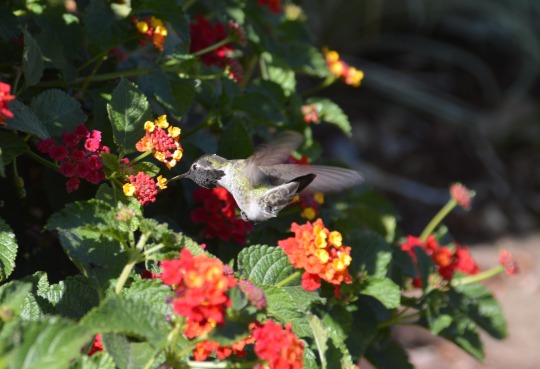
When foraging, it is important to be considerate of pollinators that help the plants we eat grow and propagate.
First and foremost, learn about your local environment. You can learn a lot about your area using this handy tool from the US Environmental Protection Agency.
Next, learn from the experts by asking staff at local regional and state parks about the legality and availability of foraging foods. Many have free educational events and classes that explore the subject and help you broaden your understanding of the environment in general. You can pick up a lot of good local wisdom from these events. If you do not have access to these services, however, you can also do some online classes here, here, and here.
Plan ahead. Chart a course and make sure you have everything you need. I always bring water, a small cooler, a pair of sharp, clean plant shears, a spade, a pocket knife, a small garbage bag for cleaning up litter, and an extra battery for my camera. Dress appropriately for the weather. Make sure your phone is charged and people know where you are and when to worry if they don't hear from you. Carrying bear spray on you doesn't hurt either, although do please remember to consider the direction of the wind so you don't accidentally spray yourself instead.
Do your due diligence in identifying the plant and investigating its status before just picking it. Ideally, you should choose a couple of species you already know to be edible and just pick those while you are out. It is wasteful and damaging to the environment to pick plants you don't recognize, only to find out you've pulled a rare native plant that certain species rely on to survive.
Harvest conservatively. Take only what you are certain you will eat, because every plant you take means many meals fewer will be available for local wildlife.
Leave the place better than you found it. If you notice trash, pick it up and dispose of it in the proper receptacles. Do not litter, do not attempt to alter the landscape (chopping down trees, burning or clearing "undesirable" plants, taking rocks, etc.), do not disturb dens or nests, and don't drive or walk off of the path. Soil compaction is a real thing.
Know the law regarding what is legal to pick and where it is legal to pick from. Some state and regional parks only allow foraging at certain times, and many do not allow it at all.
Devon Young goes into a little more detail on Learning Herbs.
❁❀✿✾
Transplanting Wild Edibles
When it comes to ethical foraging though, perhaps the single most ethical thing you can do is just grow these plants yourself. You can easily order seeds online that you can plant and grow in a pot or in your yard. Some of them are quite beautiful and most are very easy to grow. If you don't want to order them online, consider collecting seeds instead, but please remember to limit what you take so that the plants are able to properly propagate in the wild. You can learn how to harvest seeds from this article by Michigan State University.
I strongly encourage anybody interested in foraging to
It is also possible to transplant weeds. You may find a weed you like on a neighbor's lawn, and with their permission, you can dig it up and plant it in your own yard. Here's a cool video from Youtube that shows you how to do just that.
Avoid doing this with weeds from parks and other wild areas, however, because the further the plants have to travel before they are planted the less likely they are to survive, and that is wasteful. If you bring a pot and some soil, they may travel longer if you replant them right away.
Also, do be aware of the environment you are taking them from, as you obviously do not want to eat any plants that have been serving as a neighborhood dog or cat's latrine. A good place to take them from is your own backyard, provided you follow the above guidelines. Gathering and growing seeds wild circumvent this issue.
Always wash plants thoroughly before consumption. That will also help you avoid accidentally consuming any bugs.
❁❀✿✾
And that's it! That's how you can forage and eat adventurously without making a mess and disrupting your environment.
If you're from the east bay area/northern California, I can share some of my favorite weeds to eat.



Broadleaved Pepperweed
Bull Thistle
Cobwebby Thistle
Common Chickweed
Creeping Woodsorrel (limit due to oxalic acids)
Crane's Bill/Wild Geraniums
Fireweed
Hairy/Purple Vetch
Miner's Lettuce
Wild Mustard
Wild Radish
You can even find some recipes here.
Enjoy responsibly. ❁❀✿✾
#foraging#plants#weeds#garden#gardening#herbs#wild herbs#northern california#north america#plant identification#eat the weeds#pollinators#honeybees#bees#bumblebees#environmentalism#transplanting#free resources#nature photography#my photography#my articles#backpacking#camping#foraging guide#ethical foraging#wild edible plants#flowers#my writing#written by me
7 notes
·
View notes
Text
youtube videos that have made alena go viral:
diy basket weaving
foraging for berries + how to get chipmunks to like you
i did not get surgery to look like this
sew my midsummer wardrobe with me
6 notes
·
View notes
Text

Spanish Needle (Bidens alba)
———
This annual plant is actually an herb!
Region: Southern United States
Bloom Time: Annual
Picture Location: Crestview, Florida
More Information:

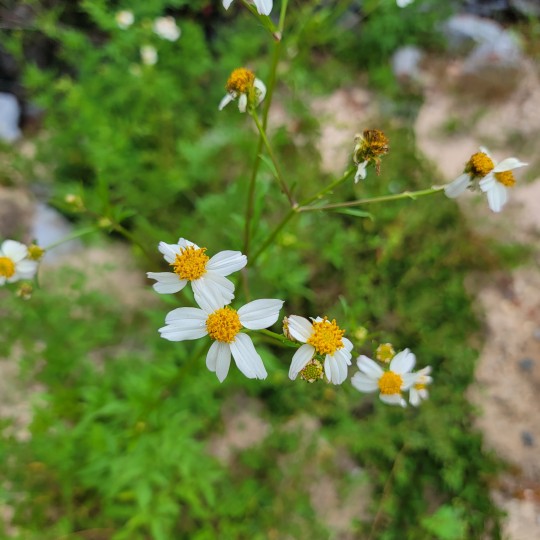
1 note
·
View note
Text
The Foliage That Surrounds Me
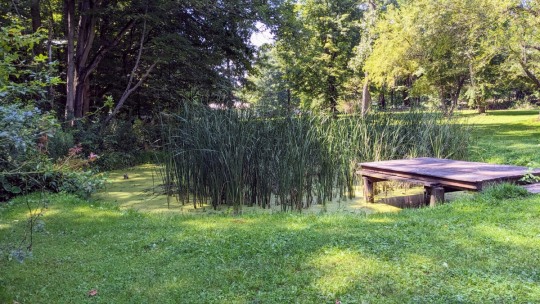
View On WordPress
0 notes
Text
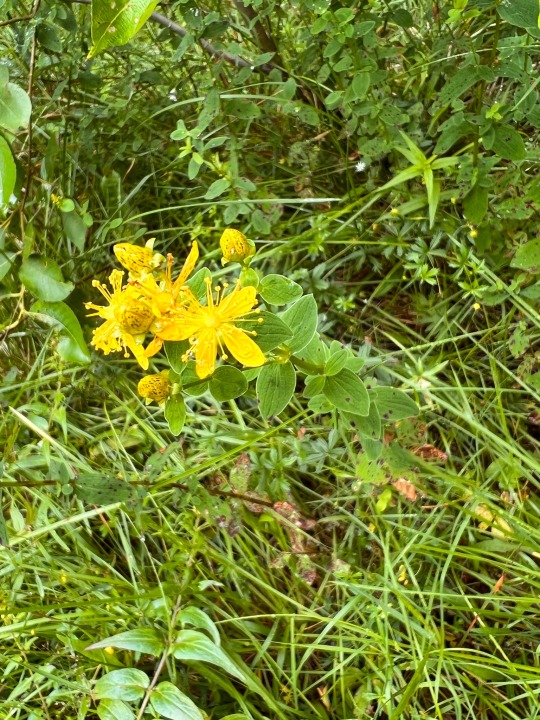

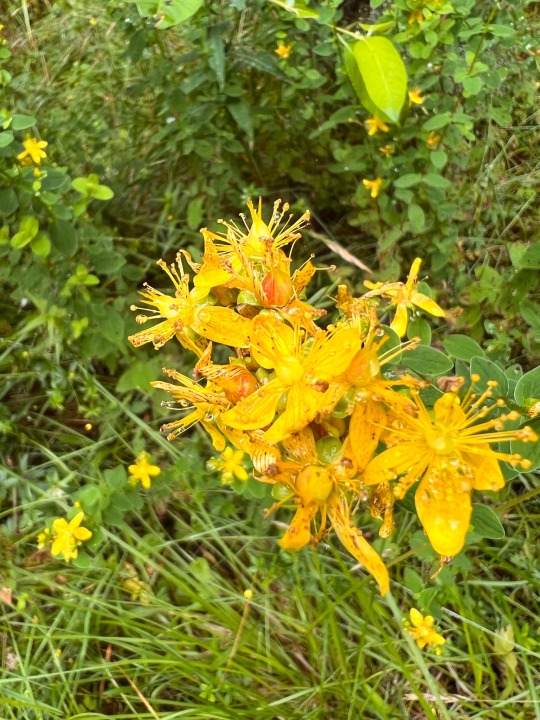
Hypericum maculatum, commonly known as imperforate St John's-wort, or spotted St. Johnswort, is a species of perennial herbaceous flowering plant in the family Hypericaceae. It is native to Europe and Western Asia where it grows in moist meadows. It is considered to be a medicinal plant.
#mine#flowers#plants#nature#photo#photography#plant identification#st john’s-wort#hypericum maculatum#perennial#flowering#flowering plants#perennial plants#medicinal plants#herbaceous#herb
0 notes
Text
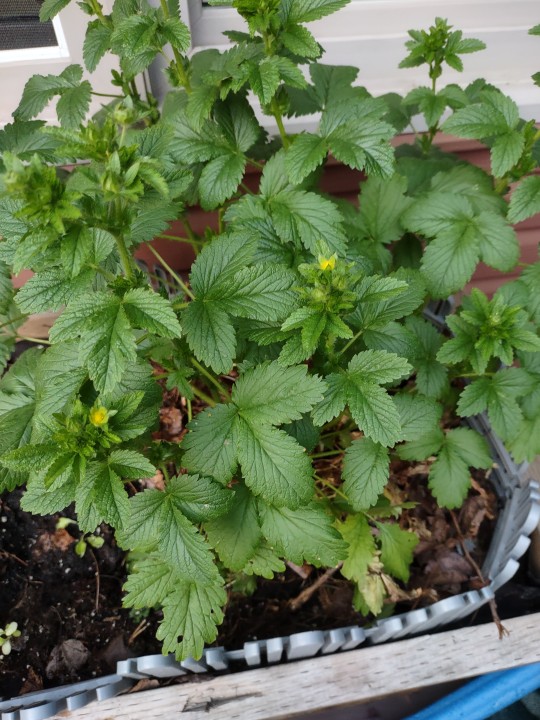
My mom sent me this photo of this plant growing in one of her boxes, she doesnt know what it is and can't find any matching photos online, anybody here know what it is?
1 note
·
View note
Text
Buck Moon - July 3, 2023

Put on your flower crowns and your dancing shoes, it's time for the Buck Moon!
Buck Moon
The Buck Moon is the name given to the full moon in the month of July and is called this because at this time of year, the antlers on male deer are at the height of growth and impressiveness. This month also marks the first supermoon of the year!
Other European names for the July moon include Hay Moon and Wort Moon. North American Indigenous names for this moon include Salmon Moon (Tlingit), Berry Moon (Anishinaabe), Month of the Ripe Corn Moon (Cherokee), and Raspberry Moon (Algonquin, Ojibwe).
The West Abenaki also call this the Thunder Moon in reference to the often-stormy summer weather. (This one is my personal favorite and the name appears in lunar calendars just as often as the Buck Moon.)
What Does It Mean For Witches?
The July full moon continues June's template of planning for the future, this time with a focus on your passions and ambitions. Reflect on what you've accomplished so far this year and plan your next step.
Dream big and plan big, but don't give in to reckless urgency. Summer (and capitalist grind culture) gives us the urge to Go Go Go. Despite all this, it's important to take time to rest and recharge, lest we find ourselves burning out and losing our motivation.
What Witchy Things Can We Do?
Celebrate your victories and revel in the abundance of the summer season. If you're inclined to do so, take a page from the deer and do a bit of prancing around a bonfire or your favorite flower arbor with some festive flowery headgear.
Go exploring! Find a local park or garden and take a stroll among the greenery, or use TV and the internet to explore and learn about faraway places. This is another opportune time to go and check out pick-your-own farms and farmers markets as well. Sharpen your foraging and plant identification skills while you're out and about!
If you're tending a garden, harvest some herbs and investigate what you can make with them. Whether it's seasoning for meals, homemade botanical products, or just helpful spell ingredients, many herbs and flowers have a plethora of uses. As an exercise, select three plants growing in your garden, research their magical correspondences and botanical properties, and try to think of as many ways as possible to use each one for witchcraft and for practical purposes.
(Safety Note: Always clean and prepare home-harvested herbs properly before using them for kitchen, bath, or medical preparations. Always consult a doctor before trying an herbal treatment and take all allergies, medications, and pre-existing conditions into account. Please also note that while herbal treatments can be helpful, it can have negative interactions and side effects just like any other medication, and it is not meant to be a replacement for modern medical care.)
Apart from the usual full-moon festivities, I've always found this is an excellent time for weather-witching. Summer weather is notoriously fickle, but it is also highly malleable - one recalls that old American Southern epithet of, "If you don't like the weather, wait five minutes."
If you're hoping to bring some rain to water your garden or break the back of a heat wave, this may be the time to do it. My personal favorite folk magic ritual for rain-calling involves going outside with a broom and a bucket of water, using the broom to scatter drops of water over your yard, and shouting up to the clouds, "SEE? IT'S NOT HARD!"
Make sure you take local weather patterns into account and try to draw on existing fronts and nearby precipitation to get the desired result. And keep in mind that with weather magic, less is more and one casting is enough. Asking for too much or asking too often can produce undesirable results. And if you manage to make it rain, be sure to collect some for moon water!
If you're interested in weather-witching, I highly recommend checking out this masterpost by @stormbornwitch for a number of excellent articles and suggestions.
Happy Buck Moon, witches! 🌕🦌
Further Reading:
Buck Moon: Full Moon in July 2023, The Old Farmer's Almanac
Buck Moon 2023: The Awesome Spiritual Meaning of July's Full Moon, Amanda Brethauer, The Peculiar Brunette
The Hearth Witch's Garden Herbal, Anna Franklin, Llewellyn Publications, 2023.
Everyday Moon Magic: Spells & Rituals for Abundant Living, Dorothy Morrison
(If you're enjoying my content, please feel free to drop a little something in the tip jar or check out my published works on Amazon or in the Willow Wings Witch Shop. 😊)
#witch community#full moon#moon magic#lunar magic#witchblr#witchcraft#buck moon#thunder moon#weather magic#pagan#lunar calendar
289 notes
·
View notes
Text
NEW LONGSTAR AU - Assessments
As there are many Roles an apprentice may choose to follow, there are many ways they may be judged worthy of adulthood and their Adult Name.
-ALL ROLES SKILLS-
Every adult cat -must- know four things - basic self defense fighting moves, baseline hunting skills, emergency healing methods, and dangerous plants identification. Some apprentices may also choose to also learn camp care or den repair, but these are not mandatory. Taking a secondary Role will require a second assessment, though not quite as rigorous.
-The Offensive Roles Assessments-
The Warrior, Brawler, Hunter, Tracker, Patroller, Nursery Guard and Camp Guard are all considered Offensive Roles. To be considered an Adult in any of these Roles, an apprentice must have extensive knowledge of both fighting and defensive battle moves.
Warriors, being the jack-of-all-roles, have the most variety in their assessments. Any of the below assessments may suffice, though a few demand to take more than one.
A Brawler needs to know both when to strike and when to speak - often their assessments are two faced: an apprentice must solve a fake argument between two clanmates, then defeat their mentor, or at least show great battle prowess, before even being considered ready for their adult name.
Hunters and Trackers have similar assignments - to bring in prey that weighs more than them, within a certain time period, and properly butcher said prey correctly. Tracker apprentices may also be tasked with identifying the tracks or nests of a certain number of prey and predators as well.
Patroller apprentices must be able to identify the borders by landmark from memory or lead a patrol without wandering over borders or getting into a fight with the neighbors.
An apprentice Camp Guard will be judged on their ability to keep the camp neat and tidy - usually an apprentice is made “lead” Camp Guard for a day, and judged on how well they do. Delegating is allowed - teamwork is a key part of Camp Guarding! For the more martial-minded cat, a night watch with “enemies” trying to sneak in may also work, but more than once a startled apprentice has woken the camp screaming in surprise - so not a popular method.
A Nursery Guard apprentice will be tested on their ability to keep the Nursery clean and repaired, their knowledge of kitten and Queen/King illnesses, and are usually set to care for weaned kits for a few days to see if they can handle it.
-The Healing Roles Assessments-
Healers, Seers, and Oracular Healers all are tested both by their Mentors, and by the Stars themselves.
Healer apprentices are usually quizzed over their herb knowledge, injury and illness knowledge, and their ability to keep cool in hard situations. However, an emergency dealt with exceedingly well or live saving innovations may also lead to their being presented to the Moonstone/Moonpool/Silverpelt. Firepaw was promoted for delivering Cloudkit and keeping his sister alive, and Runningpaw of Shadowclan for his invention of leaf masks, to protect both Healer and patient.
Seers are tested by Starclan, sent signs both small and large, monumental and insignificant. Their mentors test them with diplomacy and riddles. Any apprentice Seer of a certain age (over 12 moons) may ask Starclan to bless them with their adult title, but few receive it until after at least 14 moons.
Oracular Healers are tested both ways. (Therapists are tested both ways, and with the mental health of a patient. Darkpaw was ready halfway through the Journey, but waited until the Clans had made it to their new home to ask. The Stars gave him a Vision, and he followed it to the Moonpool.)
-Support Roles Assessments-
Historians and Storykeepers have very similar assessments - each apprentice must list certain facts or a tale without any warning. A Historian may be asked to list their leader’s bloodline three generations back, and a Storykeeper called upon to tell an important tale before the Clan.
Permaqueen/Kings are generally a Role chosen second, but any apprentice who wishes to become one has basically the same test as a Nursery Guard.
Tacticians are set to find a placement for a kit, real or imaginary. To give a kit, or perhaps a warrior, their place in life, is the highest calling of a Tactician. Sometimes an apprentice is asked to find a battle plan for a false or historical battle.
Crafters are judged for both the beauty and durability of their art. Apprentices are tasked with decorating a cat who then goes through their day as normal, and judgement is held on how the decorations held up. Inventing new methods also can be grounds for promotion.
Herbalist gardens are their proving grounds, with the most finicky plants held for assessments. To raise your own garden is only half the task, a competent Herbalist must also know the use for each - and identify their wild counterparts. It’s the harvest that really counts in the end.
To fail an assessment is not a shame to the student, but to the teacher and the Clan - an apprentice that needs more help is just an apprentice, not a bother.
#warrior cats#warriors#warrior cats au#hello from the void#Longstar au#New Longstar au#Infodump#clan culture
21 notes
·
View notes
Text
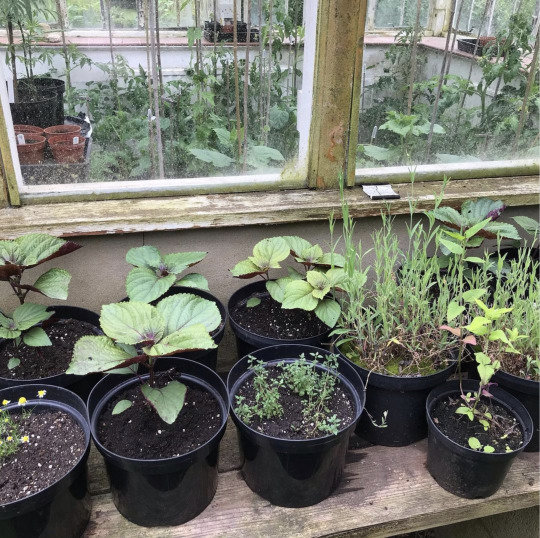
Have you ever tasted the savoury Perilla herb (Perilla frutescens)? This is the plant to the left with the large leaves with purple undersides. The Perilla herb has an intensely savoury flavour that’s especially appealing with oily fish like salmon and gamey poultry like duck. It’s a popular herb in its native Korea and Japan. The complex flavour comes from a unique combination of natural plant chemicals found exclusively in Perilla, such as perillaldehyde. The chemicals in Perilla are currently being researched for their medicinal properties.
#katia plant scientist#botany#plant biology#plants#plant science#herbs#gardening#japanese food#perilla#korean food#plant identification
4 notes
·
View notes
Text

Rosehip Chamomile Tea Latte (Vegan-Friendly)
#vegan#drinks#breakfast#tea#latte#rosehips#wild foods#herbs#chamomile#plant milk#rosewater#if you do decide on making any of today's recipes be sure you forage/source sustainably or not at all#Also be 150% sure in your identifications 💕
49 notes
·
View notes
Text
Yarrow and its Uses
Disclaimer: The below is the culmination of tedious, scrupulous research meant to assist with magical and medicinal practices. However, we lack a variety of lab-conducted herbalism trials in humans, so precautions are necessary. None of the below represents medical advice or is meant to replace treatment by a medical professional.
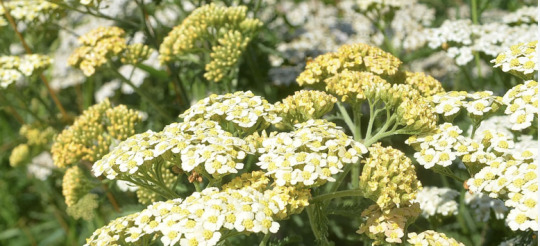
Identification and Profile:
Appearance: White, yellow, or pink flowers bloom from March to October. Very strong sweet smell. Often mistaken for hemlock or queen anne’s lace; leaves and flower shape are the most reliable identifiers for telling these three apart.
Distribution & Habitats: Native to temperate regions of the Northern Hemisphere. Thrives in meadows, roadside ditches, grasslands, and open forests. Attracts predatory wasps, ladybugs, and other beneficial insects. Reduces parasites in the nests of birds such as the common starling, who line their nests with it.
Associations: Yarrow was found in a neanderthal burial site in Iraq, suggesting its use by humans for more than 60,000 years. While yarrow has impressively consistent medicinal usage across cultures - namely healing and inflammatory pain relief - cultural and spiritual connotations vary. Yarrow’s botanical name refers to the legend that the centaur Chiron taught Achilles to use yarrow on the battlegrounds of Troy to heal wounds. Across the British Isles, yarrow was used to assist women in finding husbands, from divination to sleeping with the flowers under ones’ pillow. In Europe, it was known as a witch’s herb, occasionally called the Devil’s Nettle.
Uses:
Topical: Effective antibacterial, astringent, antifungal, and antiseptic agent and can be applied to wounds to deter infection, speed up healing, and soothe inflamed or irritated skin. Ethanol extracted essential oil is the most lab-studied form of topical application, though dried flowers can be powdered, applied as whole dried flowers, or made into poultices and salves to wounds to stop bleeding.
Oral: Flavonoids of yarrow make it a powerful antispasmodic and decent anti-inflammatory, most often used for gastrointestinal disorders. Yarrow can also induce sweat to break a dry fever. Essential oil of yarrow heals stomach ulcers. Navajo people chewed the leaves to reduce tooth and gum aches or inflammation in the mouth. Mild laxative properties. Mild sedative when consumed as tea. Tea also can be consumed to reduce headaches and cold symptoms, and sterols in yarrow can regulate menstrual cycles.
Inhalation: Boiling the plant and inhaling the steam can reduce headaches and sinus inflammation.
Dosage: Oral dosage is 2-4g of dried herb, flower and leaf, or 3g of whole flowers. Consecutive use is not recommended for longer than 2 weeks.
Interactions & Side Effects:
- Adding nettle to yarrow consumed orally can reduce oxalate burden on kidneys.
- Possibly an abortificant by relaxing the uterus, and may reduce breast milk supply while breastfeeding.
- Increases production of stomach acid, lowers blood pressure, and increases risk of bleeding for those on blood-thinning medications. - Also interacts poorly with lithium based medications by increasing the body’s lithium retention.
10 notes
·
View notes
Text
@mosskiss said: I’m thinking about studying herbal medicine do you have any accessible books you recommend?
Ah sure. Herbalism is both a science and an art. No two herbalists practice in just the same way because the thinking processes & healing philosophies differ from person to person. So, I can recommend a few beginner-friendly books (though some are dense) which I personally found very useful in my own journey.
(Normally, I am primarily a book learner. But, as guided by my herbal coursework, I was encouraged to also learn about the herbs through direct experience and studying a variety of traditions & other herbalists. Herbalism is not properly studied when you just experience it on paper, I realized. So, I would recommend a similar thing for beginners: learn botany, plant identification, forgaging, gardening, medicine making, safety precautions, how to research herbs properly, and different traditional medicine systems [such as Ayurveda, Traditional Chinese Medicine, Unani-Tibb, Caribbean Bush Medicine, Western Herbalism, etc. It's especially best to understand how a certain herb was used on the land which it's native to]. Podcasts and articles can be good resources too. Most of all, deeply testing and experiencing herbs one-by-one is crucial in my view).
Here's my list:
Common Herbs for Natural Health by Juliette de Baïrcli Levy
Rosemary Gladstar's Medicinal Herbs: A Beginner's Guide
Making Plant Medicine by Richie Cech
The Herbal Medicine Maker's Handbook: A Home Manual by James Green
The Secret Teachings of Plants: The Intelligence in the Direct Perception of Nature by Stephen Harrod Buhner
Renegade Beauty by Nadine Artemis
Medicinal Herbalism by David Hoffman
Natural Therapy for Your Liver by Christopher Hobbs
Adaptogens: Herbs for Strength, Stamina, and Stress Relief by David Winston & Steven Maimes
Herbal Healing for Women by Rosemary Gladstar
The Practice of Traditional Western Herbalism by Matthew Wood
Evolutionary Herbalism by Sajah Popham
The Earthwise Herbal Repertory: The Definitive Practitioner's Guide by Matthew Wood
The Mucusless Diet Healing System by Professor Arnold Ehret (Annotated, Revised, and Edited by Prof. Spira)
Heal Thyself for Health and Longevity by Queen Afua
The Detox Miracle Sourcebook by Dr. Robert Morse
Botany Illustrated: Introduction to Plants, Major Groups, Flowering Plant Families by Janice Glimn-Lacy and Peter B. Kaufman
You won't regret gaining knowledge about the plants 🌼🌱✨ I do wish you great things
#herbalism#herbal medicine#self healing#holistic leveling up#leveling up#book recommendations#books#folk herbalism#energetic herbalism#food centric herbalism#medicinal herbalism#herbs#sidewalkchemistry
39 notes
·
View notes
Text
Herbology Booklet
For witches who want to get started on a natural journey of being connected and taking control and part of their own enviroment.

A 53 page booklet with all the pointers and information you need to know to kickstart your natural journey.
You can find it on my Ko-fi for 10$ with an additional page with a Identification File you can use to note down information about the herbs you collect.
Herblogy 101 PDF Booklet
22 notes
·
View notes